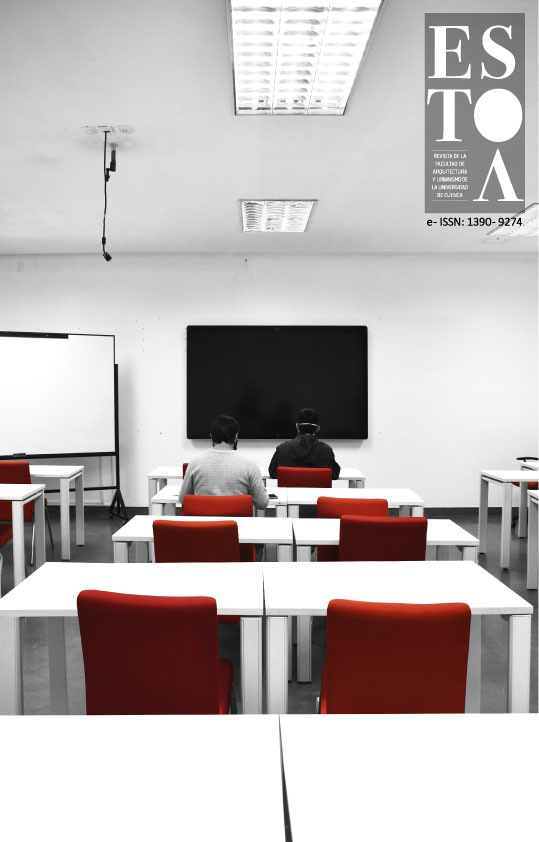Gentrification and territorial interrelation: effects of Puerto Norte on the Refinería neighborhood (Rosario, Argentina)
DOI:
https://doi.org/10.18537/est.v009.n018.a5Keywords:
gentrification, longitudinal analysis, microanalysis, GIS, RosarioAbstract
The perspective of gentrification has contributed in recent decades to understand urban spatial restructuring processes and their social and physical effects. Different studies show that these effects overflow the restructured point space and there is an interrelation between it and its environment, generating processes whose limits and temporality are diffuse. The work addresses, from a longitudinal perspective, the spatial effects of a large public-private urban intervention, in the city of Rosario, Argentina, called Puerto Norte, over the Refinería neighborhood, practically inserted into its area. Given this spatial relationship, the Refinery neighborhood is exposed to great real estate activity on its territory that, we hypothesize, opens up to a gentrification process. The sections discuss the conceptualization of gentrification, the methodological resources of the study and a synthesis of the results achieved between 2010 and 2019, as well as a selection of examples of its treatment with Georeferenced Information Systems (GIS).
Downloads
References
Barenboim, C. (2015). Impacto del megaproyecto de Puerto Norte en la transformación urbana de sus barrios circundantes en Rosario (Argentina). Revista de Direito da Cidade, 7, (3), 1311-1331.
Casgrain, A. y Janoschka, M. (2013). Gentrificación y resistencia en las ciudades latinoamericanas: El ejemplo de Santiago de Chile. Andamios, 10, (22), 19-44.
Chapple, K., Waddell, P., Chatman, D., Zuk, M., Loukaitou-Sideris, A. y Ong, P. (2017). Developing a new methodology for analyzing potential displacement. Final Report for CRB Contract #13-310. Sacramento, USA: Air Resources Board (ARB). University of California Berkeley. Recuperado de https://www.urbandisplacement.org/sites/default/files/images/arb_tod_report_13-310.pdf
Clark, E. (2005). The order and simplicity of gentrification. En N. Smith y P. Williams (Eds.), Gentrification of the City, (pp. 256-264). Londres, Reino Unido: Unwin Hyman.
Cuenya, B. y Pupareli, S. (2006). Grandes proyectos como herramientas de creación y captación de plusvalías urbanas. Proyecto Puerto Norte, Rosario, Argentina. Medio Ambiente y Urbanización, 65 (1), 81-108.
Cuenya, B., González, E., Mosto, G. y Pupareli, S. (2012). Movilización de plusvalías en un gran proyecto urbano. El caso de Puerto Norte, Rosario. En B. Cuenya, P. Novais, P. y C. Vainer (Eds.), Grandes proyectos urbanos: miradas críticas sobre la experiencia argentina y brasileña (pp. 67-118). Buenos Aires, Argentina: Café de las Ciudades.
Easton, S., Lees, L., Hubbard, P. y Tate, N. (2019). Measuring and mapping displacement: The problem of quantification in the battle against gentrification. Urban Studies. 57 (2), 286-306. doi: 10.1177%2F0042098019851953
Floriani, H. (1985). Orígenes y desarrollo de la estructura urbana del Barrio Refinería de la ciudad de Rosario. Cuaderno del CURDIUR, 24. Rosario, Argentina: CURDIUR.
Galimberti, C. (2015). A orillas el río. La relación puerto-ciudad en la transformación urbana de Rosario. Revista Transporte y Territorio, 12, 87-109.
Glass, R. (1964). Introduction: Aspects of change. En London: Aspects of change (Xiii-Xlii). Londres, Reino Unido: MacKibbon and Kee.
Hwang, J. y Sampson, R. (2014). Divergent Pathways of Gentrification: Racial Inequality and the Social Order of Renewal in Chicago Neighborhoods, American Sociological Review, 79, (4), 726-751.
Janoschka, M. (2016). Gentrificación, desplazamiento, desposesión: procesos urbanos claves en América Latina, Revista INVI, 31, (88), 27-71.
Kozak, D. y Feld, N. (2018). Grandes proyectos urbanos y su relación con la ciudad: el caso de Puerto Norte (Rosario, Argentina). EURE (Santiago), 44, (133), 187-210.
Krase, J. (2007). Visualisation du changement urbain, Sociétés, 95, 65-87.
Lees, L., Slater, T. y Wyly, E. (2008). Gentrification. New York, Estados Unidos: Routledge.
Lees, L. (2012). The geography of gentrification: Thinking through comparative urbanism. Progress in Human Geography, 36, (2), 155-171.
Lees, L., Shin, H. y López-Morales, E. (2016). Planetary Gentrification. Cambridge, Reino Unido: Polity Press.
Ley, D. (1996). The new middle class and the remaking of the central city. Oxford, Reino Unido: Oxford University Press.
Marcuse, P. (1985). Gentrification, abandonment and displacement: connections, causes, and policies responses in New York City. Journal of Urban and Contemporary Law, 28, 195-240.
Municipalidad de Rosario (2009). Plan Rosario Metropolitana Estrategias 2018. Rosario, Argentina: Municipalidad de Rosario.
Municipalidad de Rosario (2011). Plan Urbano Rosario 2007-2017. Rosario, Argentina: Municipalidad de Rosario.
Prieto, A. (1990). Condiciones de vida en el Barrio Refinería de Rosario: la vivienda de los trabajadores (1890-1914). Anuario de la Escuela de Historia, (14), 165-181.
Rodríguez, G. y Cuenya, B. (2018). Derivaciones del gran proyecto Puerto Norte en el barrio Refinería de la ciudad de Rosario, Argentina, 2001-2010. Papeles de población, 24, (96), 255-286.
Rubiales-Pérez, M. (2014). ¿Medir la gentrificación? Epistemologías, metodologías y herramientas de investigación de carácter cuantitativo y mixto. Working Paper Series. Contested Cities (1), 1-18. http://contested-cities.net/wp-content/uploads/sites/8/2014/03/WPCC-14007_RubialesMiguel_Medir-la-gentrificaci%C3%B3n.pdf
Sabatini, F., Robles, M. S. y Vásquez, H. (2009). Gentrificación sin expulsión, o la ciudad latinoamericana en una encrucijada histórica. Revista 180, (24), 18-24.
Scarpacci, M. (2013). El GPU de Puerto Norte en el planeamiento estratégico socialista: Rosario, Argentina 2003-2013. (Tesis de Maestría). Facultad Latinoamericana de Ciencias Sociales (FLACSO), Quito, Ecuador. Recuperado de https://repositorio.flacsoandes.edu.ec/handle/10469/7547
Smith, N. (2002). New globalism, new urbanism: gentrification as global urban strategy. Antipode, 34, (3), 427-450.
Published
How to Cite
Issue
Section
License
The Journal declines any responsibility for possible conflicts derived from the authorship of the works that are published in it.
The University of Cuenca in Ecuador conserves the patrimonial rights (copyright) of the published works and will favor the reuse of the same ones, these can be: copy, use, diffuse, transmit and expose publicly.
Unless otherwise indicated, all contents of the electronic edition are distributed under a Creative Commons Attribution-NonCommercial-ShareAlike 4.0 International License.




